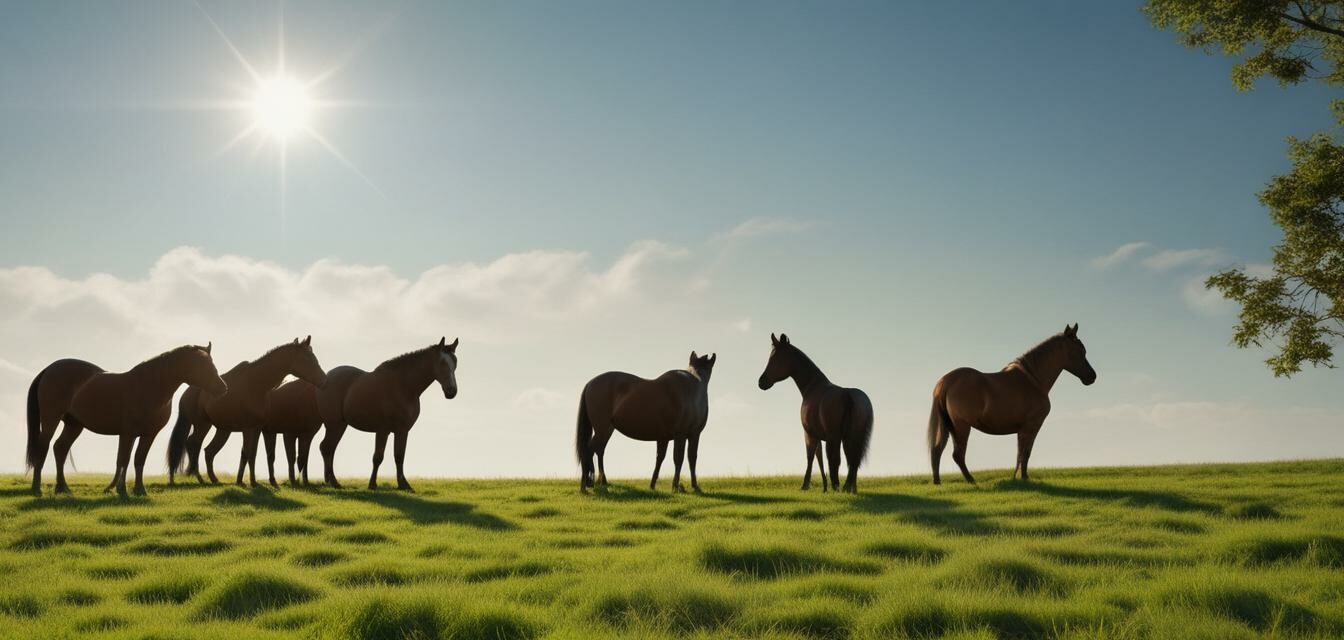
The Future of Horse Breeding: Trends to Watch
Key Takeaways
- The integration of genetic testing is revolutionizing horse breeding.
- Focus on health and performance is changing breeding strategies.
- Technological advancements are improving breeding practices.
- Sustainability is becoming a priority in horse breeding.
- Understanding emerging trends ensures better breeding decisions.
The world of horse breeding is rapidly evolving, driven by advancements in technology and a deeper understanding of equine genetics. As we look toward the future, it’s essential for breeders, owners, and enthusiasts to stay informed about these trends to improve their breeding programs and enhance the overall health and performance of their horses. This article explores the key trends shaping the future of horse breeding, focusing on genetics, health, and innovative practices.
1. Genetic Testing and Its Impact
Genetic testing is one of the most significant advancements in horse breeding in recent years. By analyzing the DNA of horses, breeders can make informed decisions that enhance their bloodlines.
- Genetic markers can predict performance traits.
- Health screening helps avoid breeding horses with hereditary conditions.
- Understanding genetic lineage aids in selecting ideal mating pairs.
2. Enhanced Focus on Health
Today's breeders are increasingly prioritizing the health of horses in their breeding decisions. This shift encapsulates a broader understanding of holistic equine care, which includes:
| Health Aspect | Description |
|---|---|
| Nutrition | Balanced diets specific to breed and age promote strong growth. |
| Preventative Care | Vaccinations and regular vet check-ups ensure long-term health. |
| Exercise Regimens | Proper physical activity aids in muscle development and stamina. |
3. Innovations in Breeding Techniques
With technology advancing, breeders are adopting new methods to enhance traditional practices:
- Artificial insemination (AI) enables greater access to exceptional genetics.
- Embryo transfer allows breeding of mares that are unable to carry foals.
- Understanding stem cell therapy has opened avenues for improving recovery from injuries.
4. Sustainability in Breeding Practices
As environmental concerns rise globally, sustainability is becoming essential in horse breeding. Breeders are pursuing eco-friendly practices such as:
- Choosing organic supplements and feed for horses.
- Implementing sustainable waste management systems.
- Creating more efficient land use plans for grazing and breeding facilities.
5. Keeping Up with the Latest Trends
For breeders to remain competitive and ethical in their practices, staying abreast of emerging trends is critical. Engaging with communities and resources can provide valuable insights:
- Follow reputable news sources in equestrian sports.
- Attend workshops and seminars that focus on breeding innovations.
- Join forums and social media groups centered on horse breeding.
Pros
- Improved understanding of genetics leads to better breeding outcomes.
- Enhanced horse health contributes to longer lifespans and better performance.
- Increased sustainability is beneficial for the environment.
Cons
- New technologies can be costly for small-scale breeders.
- Genetic testing requires a learning curve for effective implementation.
Conclusion
The future of horse breeding is bright and exciting, with innovative technologies and a deeper understanding of equine health and genetics driving change. By staying informed about these prominent trends, breeders can ensure they are making the best choices for their horses, improving overall performance, and meeting the growing demand for sustainable practices in the equestrian community. This evolving landscape not only benefits breeders but also contributes to the well-being of the horses they are passionate about.
